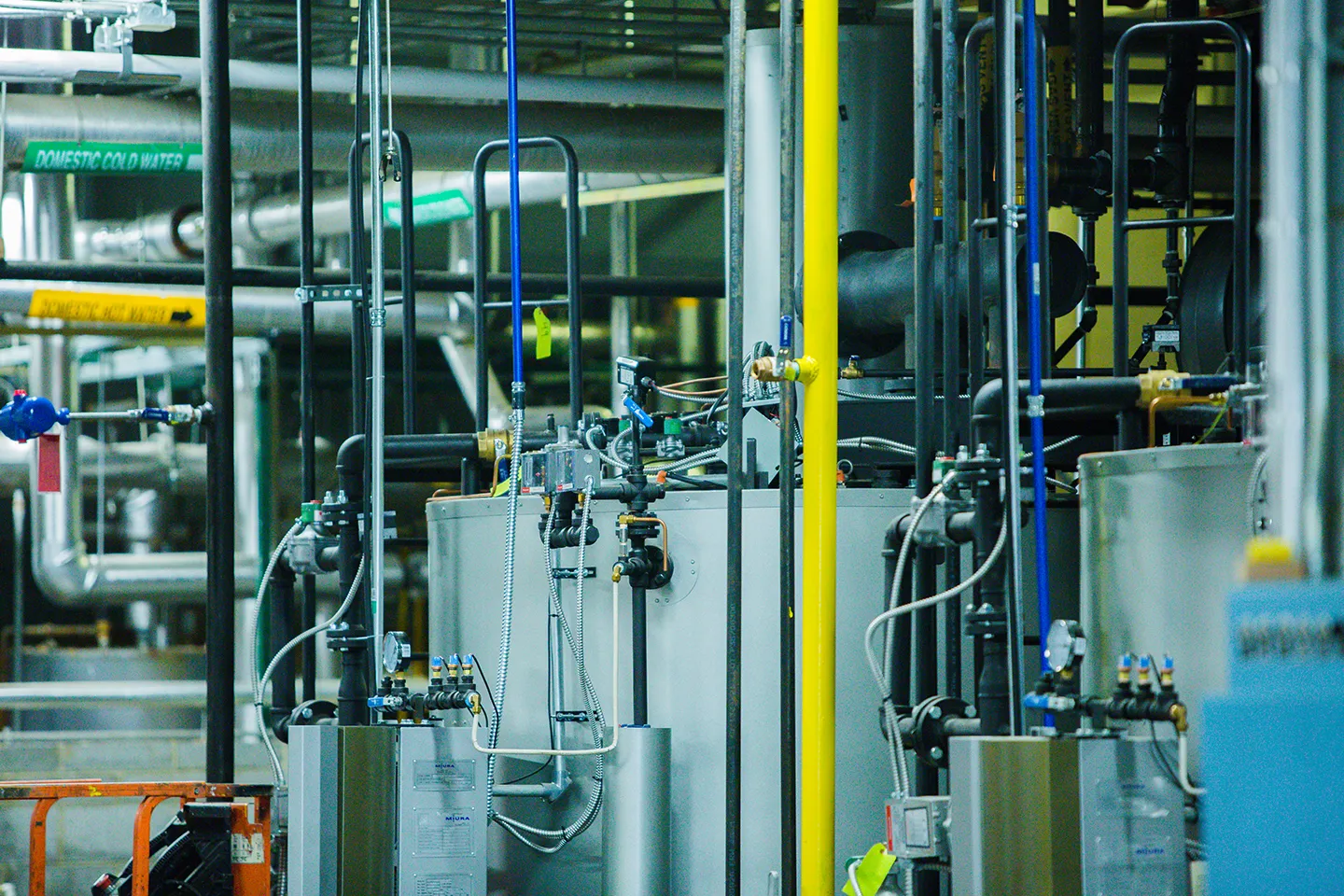As we continue our series on decarbonization for healthcare facilities, we’ll discuss steps for electrifying your facility. Read part 1 here and part 2 here, which provide additional insights on this topic.
What Does Electrification Look Like in Hospitals?
There are some areas and types of infrastructure found in all hospitals that are helpful starting points for electrification.
Kitchens
Stoves and ovens are often natural gas or propane fired, but it may be worth switching these appliances to electric if a renovation is planned in the near future. Make sure to choose induction equipment rather than electric resistance heating equipment for efficiency purposes.
Even if the equipment won’t be switched to electric today, planning for the possibility of switching to it in the future can be helpful. For example, if you’re installing a new kitchen hood with integral utilities, consider including an electric outlet where the new gas appliance will go. This will be useful in the event that you want to switch to electric equipment before it’s time to renovate in order to comply with the federal government’s call for hospitals to be net zero by 2050.
Domestic Hot Water
Most domestic hot water systems are either from steam-to-hot-water heat exchanger or gas-fired boiler. An electric heat pump boiler is more efficient than either of these options, but would require an additional electrical connection. Even if switching to a heat pump boiler isn’t viable for the near term, plan for the future by including this upgrade in an upcoming renovation. There are some limitations that exist in today’s heat pumps, so be sure to take these factors into consideration when making a plan:
- Minimum ambient operating ranges
- As ambient temperature decreases, so does efficiency
- Available leaving water temperatures (LWT)
- Available heat pump sizes
Even if the equipment won’t be switched to electric today, planning for the possibility of switching to it in the future can be helpful."
Natalie MacDonald and Andrew Benson
Heating Hot Water
Similar issues will likely arise with a heating hot water system as domestic hot water systems when switching to an electric heat pump. Heat pumps can’t typically produce the high hot water temperatures that may be normal for a hospital’s hydronic system. Because of this, it’s important to plan early. When replacing air handling units and terminal units, select coils that will work with your heat pump in the future. Heating hot water heat pumps will have similar limitations as the domestic hot water systems, as listed below. If your system is not ready to electrify, consider using a heat pump to preheat your water before entering your current system. The limitations of heating hot water systems include:
- Minimum ambient operating range
- As ambient temperature decreases, so does efficiency
- Maximum LWTs Heat pump delta T (∆T)
- Available heat pump sizes

Chillers
Fortunately, your chillers are likely already running on electricity, unless your facility is utilizing an absorption chiller. If you’re looking ahead, consider a heat recovery chiller for your next installment. This will take rejected heat from the chilled water process and allow it to be used in the heating system. This energy-saving strategy results in essentially free heat. While this may not be enough heat to replace the heating hot water system, it can be used for preheating. Another option is a heat pump chiller, which can produce chilled or hot water depending on the need. This is an economic way to add redundancy and a great way to start electrifying heating hot water systems.
Steam
Because there is a lack of options for producing steam through electrification, a best practice may be to reduce reliance on steam. Steam will always be necessary for humidification and sterilization, but it is possible to remove hot water and domestic hot water heat production off a steam system. We recommend being on the look-out for new technologies that will produce steam efficiently from electricity. Manufactures are aware of this problem and working towards a solution. Additionally, as the carbon intensity across all grids begins to decrease, electric options could become more viable and result in a net decrease in carbon emissions.
Distributed Energy Resources
As technology improves and more facilities begin electrifying, distributed energy resources will continue to become critical for the reliability of on-site infrastructure and the grid. While microgrids can play a critical role in the reliability on-site, they will also play a role in creating a more reliable grid overall as the energy landscape shifts from traditional centralized energy systems to more distributed sources of power.
Click here to read part 1 of this series, and here to read part 2.